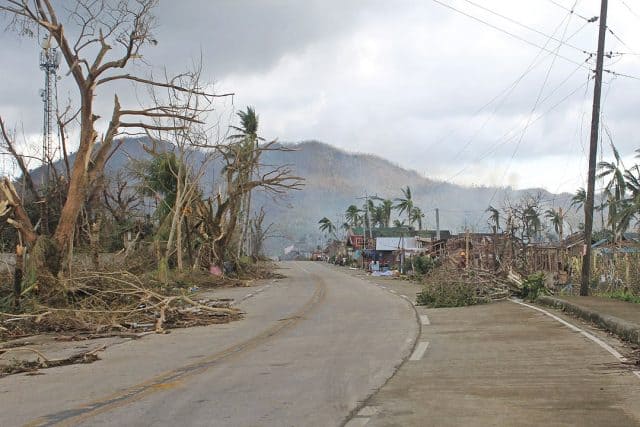
The government should provide shelter that speeds up recovery and ensures the safety of families affected by disasters, mostly by supporting local community-based plans, the World Bank said in its disaster recovery framework for the Philippines.
The World Bank on Friday released its Post-Disaster Shelter Recovery Policy Framework (PDSF) done in partnership with the Department of Human Settlements and Urban Development (DHSUD).
“The PDSF is an instrument to help the government and stakeholders systematically address the shortcomings in the current approaches to shelter recovery and to put in place a more predictable, efficient, and effective shelter recovery system. Over time, it also should reduce the need for major shelter recovery programs as the vulnerability of the housing stock is reduced and community resilience grows,” the World Bank said.
The framework emphasizes that shelter recovery should be community-managed, not contractor-driven.
“A priority of the PDSF is to put the Philippines on a path away from overemphasis on contractor-driven resettlement toward a more integrated, community-based approach to shelter recovery (in situ, whenever possible),” the World Bank said.
Under a community-based recovery model, there should be capacity-building and support for households to allow them to
“work collectively and to make repairs and oversee shelter reconstruction.”
The Department of Human Settlements and Urban Development (DHSUD) will coordinate with agencies that have experience in community-driven shelter, such as the Philippines Red Cross and UN Habitat.
The Philippines is the site of climate-related and other natural disasters, including tropical storms, earthquakes, and volcanic eruptions.
“It has been estimated that, on average, 300,000 shelter units are affected by disasters each year,” the World Bank said, noting an annual housing loss that worsens the country’s shelter deficit.
The World Bank said the government should promote disaster risk reduction by using building practices that mitigate hazards and reduce the risk of further damage.
The framework also promotes national and local shelter recovery plans, which means that local government units need to develop clear guidelines on funding sources.
As for funding, the framework said that shelter assistance should be targeted to households, not shelter units.
“(The framework) supports developing transparent procedures for registering affected households that ensure complete coverage while reducing duplication and free riders. Existing rules and procedures will be streamlined and strengthened.” — J.P.Ibañez
If you like this article, share it on social media by clicking any of the icons below.
Or in case you haven’t subscribed yet to our newsletter, please click SUBSCRIBE so you won’t miss the daily real estate news updates delivered right to your Inbox.
The article was originally published in Business World.







More Stories
Weekend wanderer: This walk in Manila is a trip to art and to our past
Enjoy no-frills camping in the great outdoors in Tanay
Landco Pacific raises the bar for premium resort and leisure living